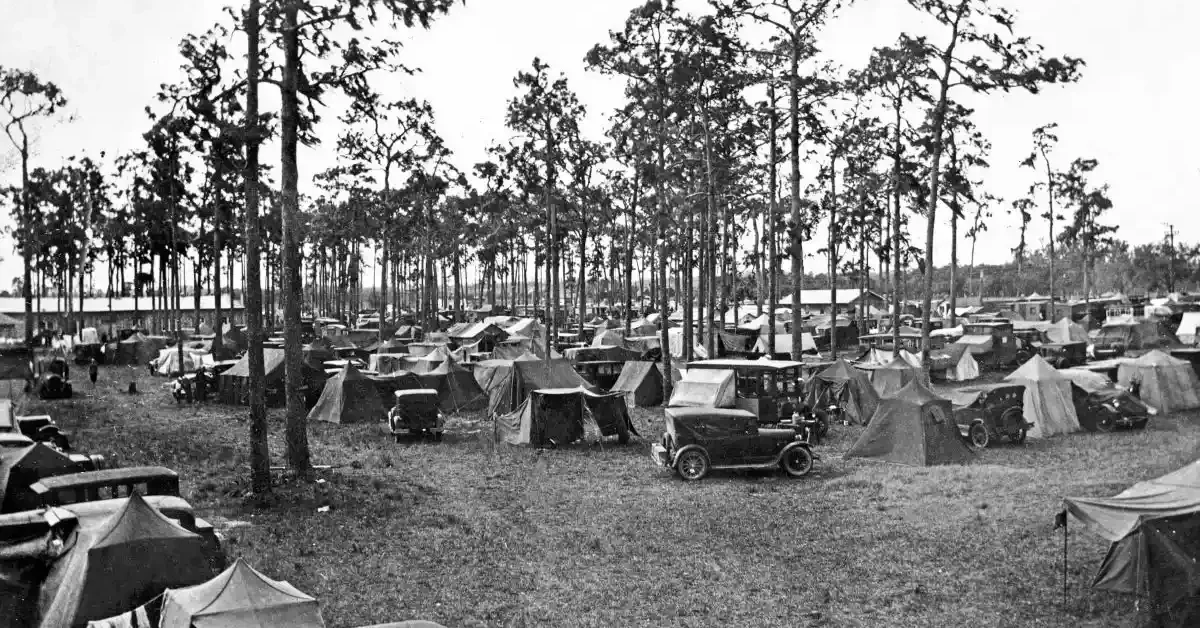They came seeking sunshine and adventure. They came with tents or campers and cars loaded with provisions. They called themselves the Tin Can Tourists—and about 100 years ago, they were the first brave souls to make the grueling drive to Florida.
It isn’t quite clear how they got their moniker. Maybe it was because their long road trip necessitated the need to pack plenty of canned goods. Maybe it was because the Model T car they tended to use was nicknamed the “Tin Lizzy.” Either way, they were pioneers of sorts.
The concept of a road trip was new at the time. The Dixie Highway opened around 1915 and provided routes that stretched from northern Michigan and Chicago down to Miami and Southwest Florida. These roads were rugged, though, at times nothing more than dirt paths. It could take up to two weeks to travel from one end of the highway to the other. But that was part of the fun. These tourists prided themselves on their survival skills, sleeping in tents and surviving on canned food. Many even built campers by hand that they hauled behind their cars.
In 1919, an organization called Tin Can Tourists of the World was formed to provide well-maintained campgrounds and a sense of camaraderie among the travelers. Their annual Florida conventions (such as the one pictured above, in Arcadia) would end up essentially lasting months, as attendees would come in campers and just decide to stay all season.
During the 1920s, millions took vacations to the Sunshine State. Hotels, restaurants, trailer parks and quirky attractions started to crop up roadside. The Great Depression would slow tourism, but the idea of Florida as a driving destination was here to stay.





